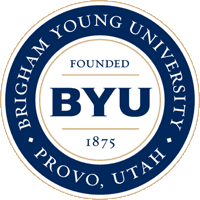Below is a summary of the abstract you submitted. Presenting author(s) is shown in bold.
If any changes need to be made, you can modify the abstract or change the authors.
You can also download a .docx version of this abstract.
If there are any problems, please email Dan at dar78@pitt.edu and he'll take care of them!
This abstract was last modified on April 5, 2023 at 12:51 a.m..

Bacillus megaterum, B. Meg, is a rod-like, Gram-positive, spore forming, bacteria that is studied primarily for its use in producing enzymes. Herein we investigated the host range of a panel of B. Meg bacteriophages isolated from soil and sewage samples to better understand these phages and their contribution to bacterial evolution. Multiple species and strains of Bacillus determined the host range of each bacteriophage. These bacteria are similar enough to have related phage infection, opening the door to allow a beginning study of phage therapy in the cross over as well as cross over in bacterial evolution. We expected our panel of phage to be able to infect a few strains other than the control strain B. Meg. The method used to test host range included a four step process. The first step was selecting a panel of bacteria to test against our phages. In total we tested the bacteriophages against 25 different Bacillus isolates. The second step included a spot test that allowed us to screen through bacteria quickly with a simple “yes” or “no” using a spot of LB as a control. The third step used an efficiency plate to determine the efficiency for each phage that tested positive from the spot assays. Lastly the phages were tittered by plaque assay to get a relative efficiency of phage infections. Remarkably, each bacteriophage was found to be capable of infecting numerous other strains of Bacillus. The preliminary results of this study suggest these phages are broad host range, able to cross the species boundary. Our findings can not only be useful in developing phage therapies, but also for understanding the evolution of these important bacteria, including pathogenic strains.
